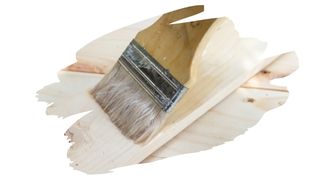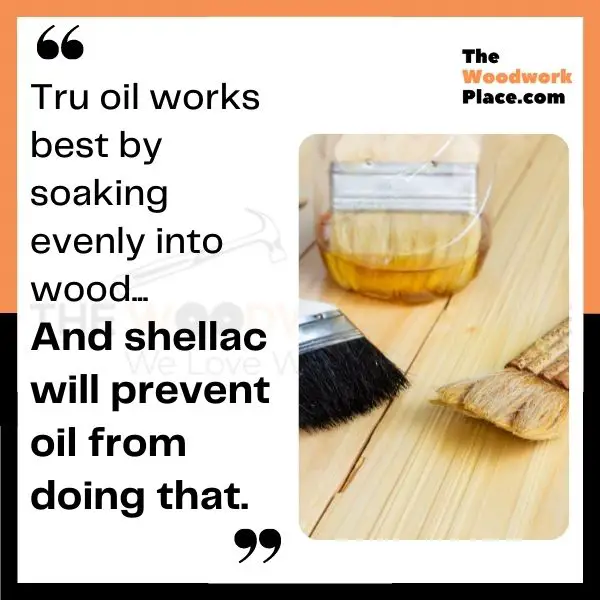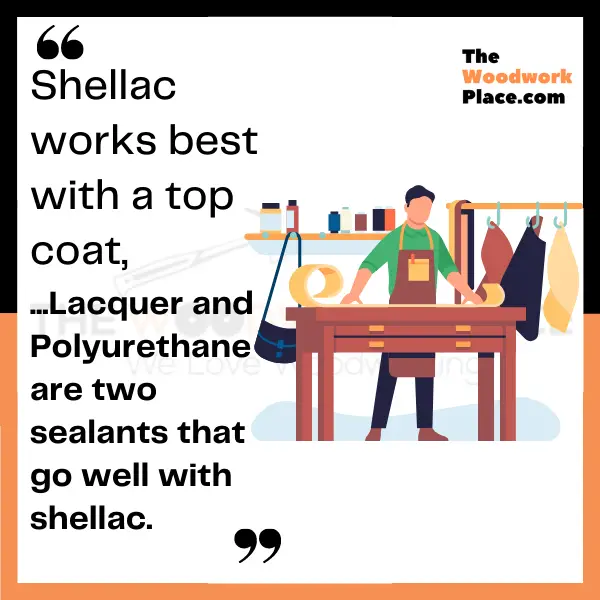Varnish, Polyurethane, Lacquer, (plus every other sealing top coat besides), all consistently do the same thing.
And what is that, you reckon?
Well, they all help to preserve wood by wrapping the surface of lumber with a hardwearing coat. This tough cover not only prevents wood from succumbing to wear and tear, but it is also very water-resistant.
Still, top sealers tend to work most of their magic on the surface of timber. And although you can purchase sealers that are designed to sink into wood, they do still prefer to do most of their build up on top.
But, if you want to make wood as water resistant on the inside as it is outside, what type of undercoat finish should you use with that sealer?
This is where drying oil finishes come in.
Whether they are all natural, (like Linseed oil and Tung oil), or are a oil blend (like Tru oil and Danish oil), these finishes do their best work underneath the surface.
Related Post: The Top 3 Tru-oil Alternatives That’ll Give Your Guitar A Fine Finish
Oil finishes soak into wood, much deeper than any top sealant. And coats wood fibers with an oily resin that repels water, making it difficult for water to soak into those fibers.
So, when it comes to wood finishing, what do you do when you want the best of both worlds? The answer is simple… you use both a finish and a sealer combined.
You let the oil finish soak, dry and cure right into the wood grain (leaving a little bit of build up on top). And then you complete the job by brushing over it with lacquer or poly.
Now, this is pretty much wood finishing 101… oil finish first, sealant after.
But, what if you’ve coated say shellac onto that wood craft, before an oil finish? Can you still put something like tru oil over shellac?
Here’s the thing, tru oil works best by soaking evenly into wood. And shellac will prevent oil from doing that.
And herein lies the problem.
If you put tru oil over shellac, you will get all of the benefits of shellac, but none of the benefits of tru oil. Instead, tru oil should be applied first. And then once it has been allowed to wholly dry and cure, you can then add a dewaxed shellac coat over it (the type of shellac you use matters too… but more on that later).
So, can you put tru oil over shellac? No, not if you want to get any of the real benefits of a tru-oil finish. Let’s take a closer look as to why. Plus, we’ll cover what you should put onto shellac instead…

This post may contain affiliate links to products that we receive a commission for (at no additional cost to you). Learn more here.
What Is Shellac? And How Does It Work?
Shellac is a natural waxy substance that can shrug off a bit of water here and there, but it is far from waterproof.
Cloudy in appearance in its waxed form, (and clear when dewaxed), this stuff may dry hard, however it can be damaged by water far too easily. Plus, it is too brittle, (and too easily scratched), to be used as a durable top coat.
Still, it will seal wood – coating over every pore – all the same. Although, it’s may not last long… as a splash of denatured alcohol can dissolve away even dried shellac.
So instead, shellac is typically used as a primer, preparing wooden surfaces for a more durable top coat such as Polyurethane or Lacquer.
Related Post: What Is The Difference Between Lacquer and Polyurethane?
Now, while you can get shellac in both it’s wax and dewaxed forms, it’s the dewaxed type that is used primarily as an undercoat. And here’s why…
Waxed Shellac
Waxed shellac is shellac that still has all of its waxy substance in it. It is so full of wax, you can literally see it in the ‘cloudiness’ of this product.
Now, that wax will make life very difficult for top coats to adhere to shellac. In fact, if you were to try and brush poly onto a waxed shellac, the polyurethane will just flake right off again.
Dewaxed Shellac
On the other hand, what separates dewaxed shellac from its waxed counterpart is evident in its name.
Dewaxed shellac is shellac that has had all of its waxy stuff removed, leaving behind a visibly clearer product.
This stuff is very, very sticky – the total opposite of waxed shellac. Most any top sealer will adhere to it. Which is why dewaxed shellac works so well as an undercoat.

Can You Put A Top Coat On Shellac?
Shellac only works best with a top coat, so yes, feel free to put a top coat over this product. In particular, Lacquer and Polyurethane are two tough sealants that go well with shellac.
Related Post: Can You Put A Durable Lacquer Finish Over Shellac?
But, and this really does bare repeating, these top coats work best on a dewaxed shellac.
But, Do I Really Need A Top Coat For Shellac?
No, not really. You don’t even need to stick to a dewaxed shellac product either.
Don’t be mistaken, you can still use waxed shellac on wood. However, waxed shellac should only be applied onto wood crafts that will rarely be handled (i.e. decorative pieces and the like).
In addition to that, a waxed shellac coat should be the final top coat, (with nothing layered on afterwards), to finish things off.
Can You Apply A Different Oil Finish Over Shellac?
Shellac works so well as an undercoat because it doesn’t only coat wood grain, it also stops-up those exposed moisture wicking wood pores.
In other words, unless you remove shellac, it will do a pretty good job at preventing oil from seeping into wood grain.
So any oil finish, (whether it be Tru oil, Tung oil or Teak oil), simply won’t be able to get past shellac to soak evenly into wood.
Related Post: Tru-oil Vs Tung Oil: Which One’s Better For Your Guitar?
Which means, when all’s said and done, an oil finish simply won’t protect that shellac.

Well Then, How Do I Protect My Shellac Finish?
By using a sturdy solid sealant that can much better handle dents, dints and everyday abrasions. In short, use poly (which is made of more indestructible stuff than lacquer).
Related Post: When Should You Use Tru-oil Vs Wipe-On Poly? [3 Key Comparisons]
Although you could also consider using epoxy over shellac too, and we discuss more about this here in our post: Can You Apply Epoxy Over Shellac? (3 Key Things You Need To Know)
To Sum Up…
Shellac, more often than not, will need a little helping hand if you want this finish to endure. But, oil finishes (like Tru oil or Linseed oil) aren’t going to be up to the task.
Oil finishes need to soak into lumber. And shellac, (whether waxed or dewaxed), will prevent oil finishes from doing so.
Which means that if you are working with shellac, you should cover it with something that can work whilst sat atop (not sinking into) wood.
This is why sealants such as poly, lacquer and epoxy work best over a dewaxed shellac finish.
